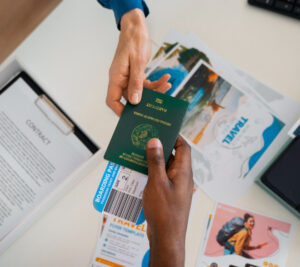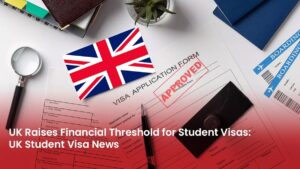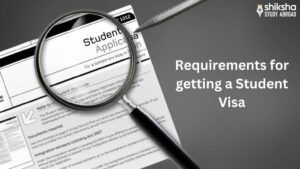India vs South Africa 1st ODI 2025 : Ranchi Match Preview, Pitch Report, Weather, Squad Details
Student Visa:13 Tried-and-True Methods for Quick Visa Approval

Student Visa
Student Visas: An All-Inclusive Handbook for Foreign Students Cross-border education has become both commonplace and essential in a world that is becoming more interconnected by the day. Millions of students go abroad each year in pursuit of better career opportunities, international exposure, and high-quality education. The student visa, a legal document that allows people to enter and remain in a country for the purpose of education, is essential to this trip. Aspiring international students must comprehend the complexities of student visas. The types, application procedures, prerequisites, difficulties, and advice for a successful application are all covered in detail in this article on student visas.

A student visa: what is it?
A student visa is a type of non-immigrant visa that is granted to people who want to attend an approved university in another nation. A student visa is especially designed for academic or professional endeavours, in contrast to tourist or work visas. It usually allows the holder to stay in the nation for the length of their course, and in certain situations, it allows limited work rights.

Student Visa Types
Depending on the level or kind of study, different nations offer different types of student visas. Here are some instances:
United States (Visas F-1, M-1, and J-1)
- F-1 Visa: For academic pursuits at colleges and universities as well as language training programs.
- M-1 Visa: For studies that are not academic or vocational.
- J-1 Visa: For students participating in exchange programs as well as other exchange visitors.
UK (Visa for Student Route)
- The primary student visa for the UK permits anyone 16 years of age and older to attend accredited universities. It took the place of the previous Tier 4 visa.

Canada (Permit to Study)
- While a study permits the students to attend designated learning institutions (DLIs), Canada does not actually issue “student visas.” Additionally, students are issued an electronic travel authorisation (eTA) or a temporary resident visa.
Australia (Visa Subclass 500)
- International students are permitted to enrol in a full-time course of study with this visa. Additionally, it grants work rights for the duration of the course.
Schengen Student Visa, European Union
- The Schengen Visa is applicable for studies lasting less than ninety days. Individual nations provide national student visas for extended studies.

Standard Conditions for a Student Visa
The majority of student visa applications need the following, though specific requirements differ from nation to nation:
- An admission letter is evidence of acceptance from an accredited school.
- Proof of Funds: Records attesting to the ability to cover living expenses, tuition, and return airfare.
- Valid Passport: A passport that is good for the duration of the study.
- Language Proficiency: Proof of language ability, such as the TOEFL, IELTS, or similar tests.
- Health and Character Requirements: In certain countries, police clearance and medical examinations are required.
- Visa Application Form: filled-out, national application form.
- Biometric Information: Photographs and fingerprints are frequently needed.

Procedure for Applications
- Apply and Get Accepted: You must be admitted to a course and institution that the immigration authority has approved before you can apply for a student visa.
- Obtain Documents: Compile the necessary paperwork, such as your passport, academic records, and financial proof.
- Pay Visa Fees: Keep the receipt after paying the necessary visa application fee.
- Arrange an Interview (if necessary): A consulate or embassy interview is required in certain nations, such as the United States.
- Application Submission: You can apply in person at the visa application centre or online.
- Await Processing: Each country has a different processing time. Applying well in advance is advised.
- Get Your Visa Decision: If your application is accepted, you will either get your visa as a separate document or as a sticker to put in your passport.
Difficulties Student Visa Applicants Face
Even though it’s a routine procedure, getting a student visa can be difficult:
Rejections of Visas
Inadequate documentation, a lack of academic motivation, weak ties to the home country, or inadequate financial proof are some of the causes.

Processing Delays
Travel plans may be impacted by delays in visa processing caused by high volumes or political factors.
Immigration Laws Are Changing
Applicants may become uncertain due to changing visa regulations, especially in nations like the United States and the United Kingdom.
False representation
Giving false information could lead to a visa being denied or future bans.

Start Early with These Tips for a Successful Student Visa Application
- Begin the application process at least three to six months before the date of your planned trip.
- Be Truthful and Unambiguous: Always give correct information and comprehensive documentation.
- Prepare for the interview by outlining your plans for study, career aspirations, and the factors that led you to choose the nation.
- Demonstrate Strong Home Ties: Immigration officials want to know that you plan to return once your studies are over.
- Keep Up: Visa regulations are subject to sudden changes. Visit the official immigration website on a regular basis.
A Student Visa’s Rights and Obligations
You have rights and limitations while you are on a student visa:
Rights
- Study: Attending an authorised school full-time.
- Work: The majority of nations permit full-time employment during breaks and part-time employment (e.g., 20 hours per week) during semesters.
- Access to Services: Restricted availability of student services, discounts, and healthcare.

Duties
- Remain Enrolled: You need to continue your academic progress and full-time enrolment.
- Comply with Visa Conditions: Comply with all requirements, including work limits and reporting.
- Leave When Visa Expires: You are required to depart when your visa expires unless you apply for an extension or another visa.
Opportunities After Study
Numerous nations provide options for remaining and finding employment following graduation:
- S.: H-1B visa options and Optional Practical Training (OPT).
- UK: Two years of post-study work are permitted under the Graduate Route.
- Post-Graduation Work Permit (PGWP) in Canada.
- Australia’s Temporary Graduate Visa (Subclass 485).
These pathways are essential for obtaining foreign work experience and possibly obtaining permanent residence.

In conclusion
A student visa is the key to international education, personal development, and future opportunities; it is more than just a travel document. The chances of success can be significantly increased by being well-prepared and comprehending the requirements, even though the application process may seem overwhelming. Student visas continue to be an essential part of international development and cross-cultural academic exchange as nations continue to draw in top talent from around the world.
Whether your goal is to study engineering in Germany, business in Canada, or medicine in Australia, the first step to reaching your goals on the international scene is obtaining a student visa.
ALSO READ THIS: Ground Zero 2025: Powerful Moments That Will Never Be Forgotten


